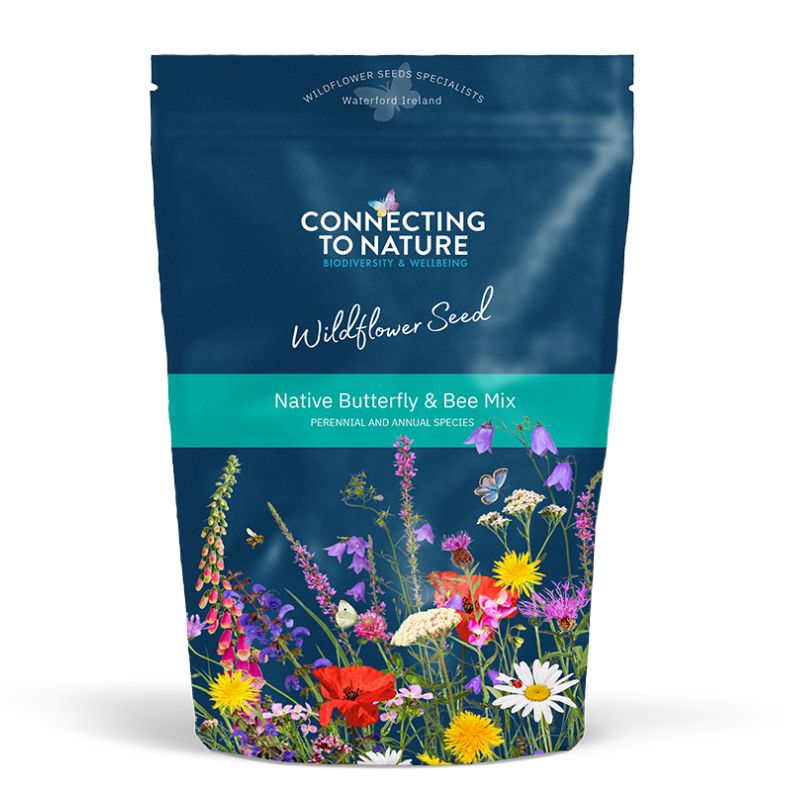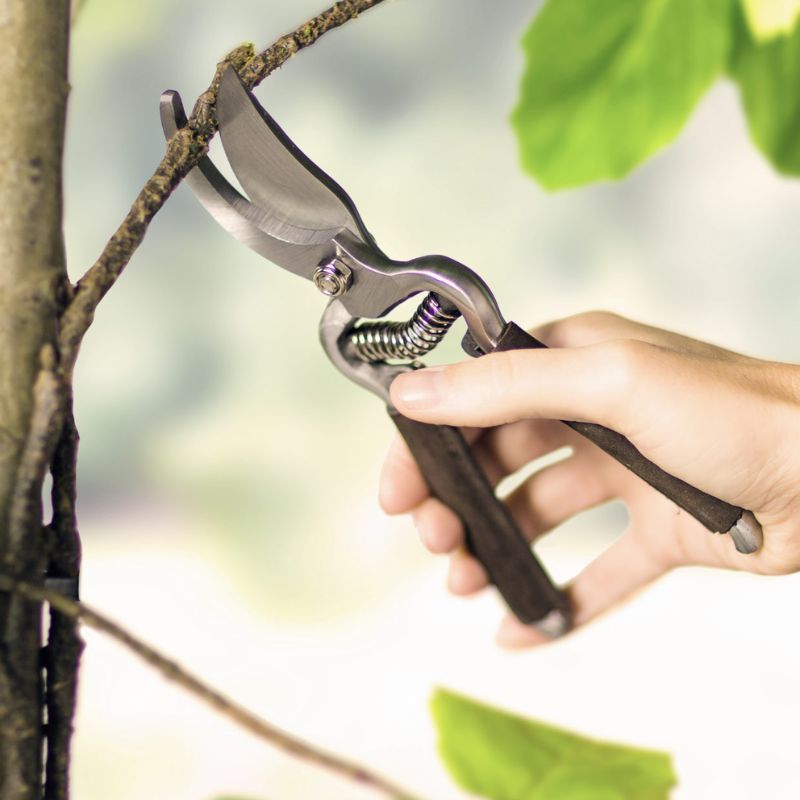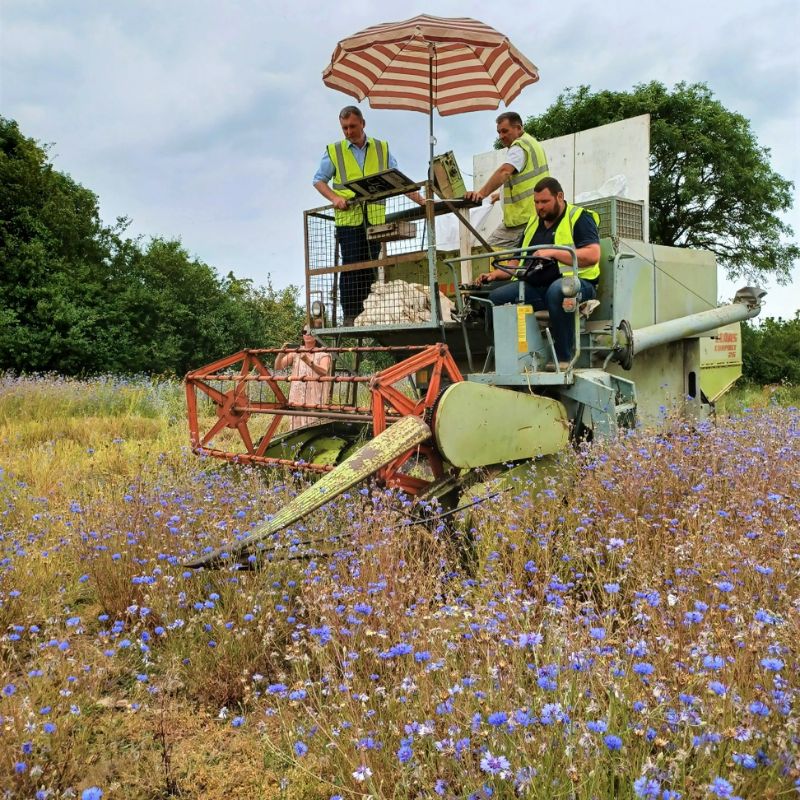Pollinating insects are vital to our very existence
For me, one of the best sounds of summer is the sound of bees working their way through my wildflowers, foraging for nectar.
I thought my bee identification skills were pretty good until I learnt that there are 99 different bee species in Ireland. I have not seen very many of these 99 species, which is hardly surprising when you consider that about 75% of them are threatened with extinction, and the remaining 25% are all in decline.
Pollinating insects are vital to our very existence. Most of our fruit and vegetables and many of our agricultural crops rely on insects to pollinate them. Bees don't just produce honey for us to eat, but they also ensure that we have apples, pears, and most of our vegetables!
The reason for the decline in the numbers of bees and most other insects is that we have dramatically reduced the amount of food (flowers) and safe nesting sites in our landscapes.
Native Wildflowers are usually the best option for pollinators. Many of the less common bees and other pollinating insects are specialists and have evolved to pollinate certain native plants. This type of relationship that benefits both the insect and the plant is called a symbiotic relationship.
Some bees and other pollinating insects have long tongues (proboscis), such as the Garden Bumblebee with a 15mm long tongue, enabling it to extract pollen and nectar from flowers with long tubes (corollas) such as red clover. Other species of bees, such as Mining Bees, have much shorter tongues (around 4- 5mm), so they need more open flowers such as Ox-eye Daisy and Yarrow to feed. A good bee-friendly wildflower mixture such as our Butterfly and Bee mixture will contain examples of native wildflowers to suit most bees and a wide variety of other pollinating insects.
Some butterflies and moth's species are much fussier than bees and have requirements for pollen and nectar-bearing flowers for both the adults and food plants for their caterpillars. Meadow mixtures which contain wildflowers and grasses suit their requirements best.
Although larger areas planted with Irish native wildflowers offer the greatest potential to attract a wide range of wildlife, don't be disheartened. Fantastic results can be achieved from a mini meadow or easy sow wildflower seed mix in even tiny areas.
Before I review some of the most bee and butterfly friendly wildflowers in our mixtures, I would like to say a few words about cultivated plants that are useful nectar and food plants for pollinators. Pollinator-friendly ornamental flowers are very easy to establish. These include mixtures of annual, biennial and perennials and some individual species that are especially attractive to bees, such as Borage which is particularly rich in nectar
Here is a small selection of the best wildflowers that support Pollinators, many of which are found in our mixtures:
Small Scabious (Scabiosa columbaria) and Field Scabious (Knautia arvensis) have delicate pink flowers and are attractive to a wide range of butterflies. These include many of the Blues, Skippers and Coppers, Hoverflies, Bees, and day flying Moths such as the colourful Burnet species.
Common Knapweed (Cetaurea nigra) and Greater Knapweed (Centaurea scabiosa) have vibrant deep purple flowers that virtually all pollinating insects find very attractive. These include some of our most spectacular butterflies such as Fritillaries and the Speckled Wood.

Bird's-foot Trefoil (Lotus corniculatus) and Kidney Vetch (Anthyllia vulneraria) are both legumes (members of the pea family) that have yellow flowers that attract most pollinating insects. They are also the food plants for caterpillars of many species of Blue Butterflies.

Here at Blooming Native, one of our first objectives was to support our declining bee populations through the provision of food sources (flowers) and information to help you successfully establish these flowers and understand their importance in our ecosystem.
Sowing wildflower seed to attract butterflies, bees, and birds can be done almost anywhere. Anyone with a garden can establish wildflower seeds, and there are even easy to grow flowers that can be sown in a window box or even flowerpots! Councils, sports clubs, businesses, schools, and campuses can all play their part.
There is no doubt that our Native Butterfly and Bee Wildflower Mixture is the "go-to mixtures" for people wanting to make the optimum contribution to help pollinating insects. This mixture gives the best results on sites that receive full sunshine for at least part of the day. If you have a garden with some shaded areas, consider selecting wildflowers for partially shaded areas.
Our Traditional Irish Native Wildflower Seed Mix is a conservation grad mixture. All of the wildflower species included are of local provenance.
I hope I have encouraged you to give wildflowers a go this spring. Wildflower seeds reward in so many ways. They create a habitat for pollinators, support biodiversity, promote our wellbeing and bring so much joy.
Enjoy the new life wildflower seeds will bring - a beautiful bloom, butterflies and bees.
|
We are encouraging you to join us in #RaisingTheBlade & #BloomingNative
Whether you have drawn a plan, prepared the soil, sown your seeds, or mowing less frequently, let us know by tagging us on social media!
Twitter: @BloomingNative
Facebook: @Blooming Native
📸 |













